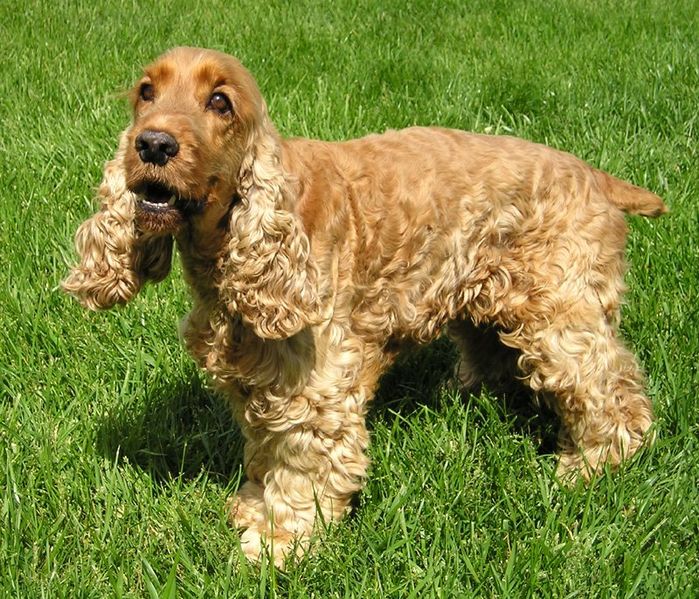
Cocker Spaniel

Navigate through the tabs
Navigate through the tabs below to view the breed's info of your interest.
The breed's info is divided in four sections; namely:
the breed's history ,
the breed's main stats ,
the dog's potential health issues
and finally, how the breed scored in 26 different categories.
All the above information should give you a respectively good overview for the dog of your interest.
Dog Breed's Main Info
The Breed's History:
While their origins are unknown, "spaynels" are mentioned in 14th century writings. It is commonly assumed that they originated in Spain, and Edward of Norwich, 2nd Duke of York in his 15th century work The Master of Game introduces them as "Another kind of hound there is that be called hounds for the hawk and spaniels, for their kind cometh from Spain, notwithstanding that there are many in other countries."
The Master of Game was mostly an English translation of an earlier 14th century Old French work by Gaston III of Foix-Bearn entitled Livre de Chasse.
In 1801, Sydenham Edwards wrote in Cynographia Britannica that the "Land Spaniel" is divided into two types: the hawking, springing/springer and the cocking/cocker spaniel.
The term cocker came from the dog's use in hunting woodcocks. During the 19th century a "cocker spaniel" was a type of small Field Spaniel; at the time, this term referred to a number of different spaniel hunting breeds, including the Norfolk Spaniel, Sussex Spaniel, and Clumber Spaniel.
While there were no Sussex Cockers or Clumber Cockers, there were dogs known as Welsh Cockers and Devonshire Cockers. The Welsh or Devonshire were considered cockers until 1903 when they were recognized by The Kennel Club as the Welsh Springer Spaniel.
Prior to the 1870s, the only requirement for a dog to be classed as a Cocker Spaniel was that it needed to weigh less than 25 pounds (11 kg), although breeders separated the cocker from the King Charles Spaniel which remains a smaller breed of spaniel.
This maximum weight limit remained on the Cocker Spaniel until 1901, with larger dogs being classed as Springer Spaniels.
The colors of the Devonshire and Welsh Cockers were described by John Henry Walsh under the pseudonym Stonehenge in his book The Dog in Health and Disease as being a deeper shade of liver than that of the Sussex Spaniel.
Following the formation of The Kennel Club in the UK in 1873, efforts were made by breeders to record the pedigrees of cockers and springers. In 1892, English Cocker Spaniels and English Springer Spaniels were recognized as separate breeds by The Kennel Club.
Country of Origin:
England
Breed Group:
Sporting
Height:
1 foot, 2 inch. to 1 foot, 3 inch. (35,56 to 38,10 cm)
Weight:
24 to 28 pounds (10,89 to 12,71 Kg)
Life Span:
12 to 15 years
Potential Health Issues:
Eye problems (progressive retinal atrophy, glaucoma, eye abnormalities),
Autoimmune hemolytic anemia (AIHA),
Hypothyroidism,
Primary Seborrhea,
Allergies (food allergies, contact allergies, inhalant allergies),
Idiopathic Epilepsy,
Canine Hip Dysplasia,
Patellar Luxation
Adaptability
Apartment Living:
First Time Owners:
Sensitivity:
Being Alone:
Cold Weather:
Hot Weather:
Friendliness
Affection With Family:
With Kids:
With Dogs:
With Strangers:
Health and Grooming
Shedding:
Drooling:
Easy To Groom:
Overall Health:
Weight Gain Potential:
Size:
Training
Easiness:
Intelligence:
Mouthiness:
Prey Drive:
Barking or Howling:
Wanderlust:
Need For Exercise
Energy Level:
Intensity:
Exercise Needs:
Playfulness:
Our Mobile Application
Check out Our Mobile Application "Dog Breeds Central"
